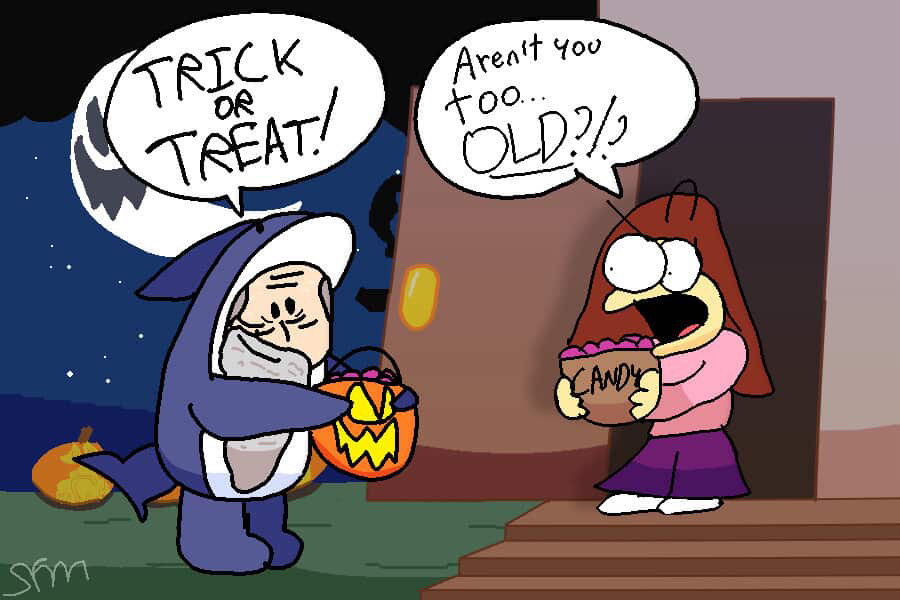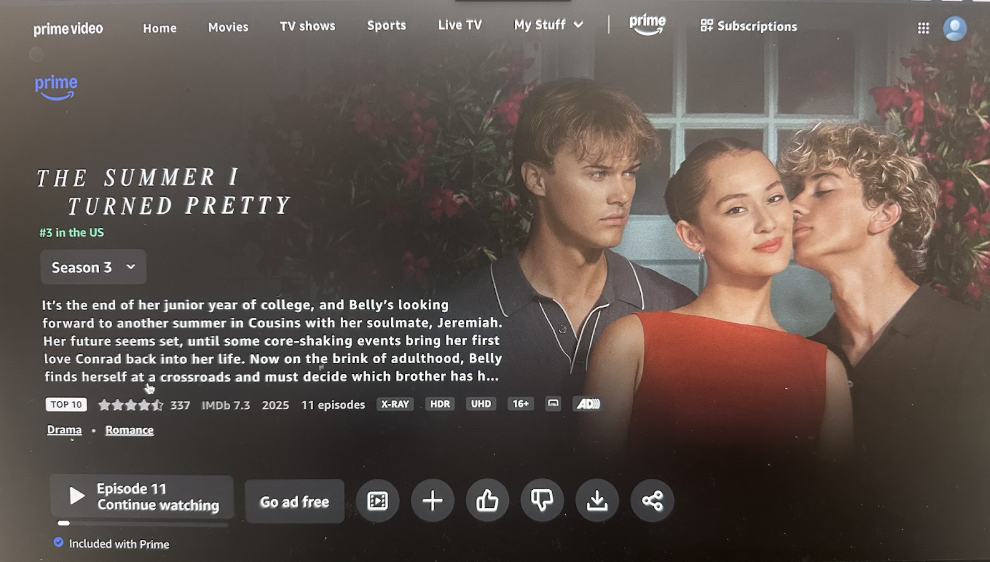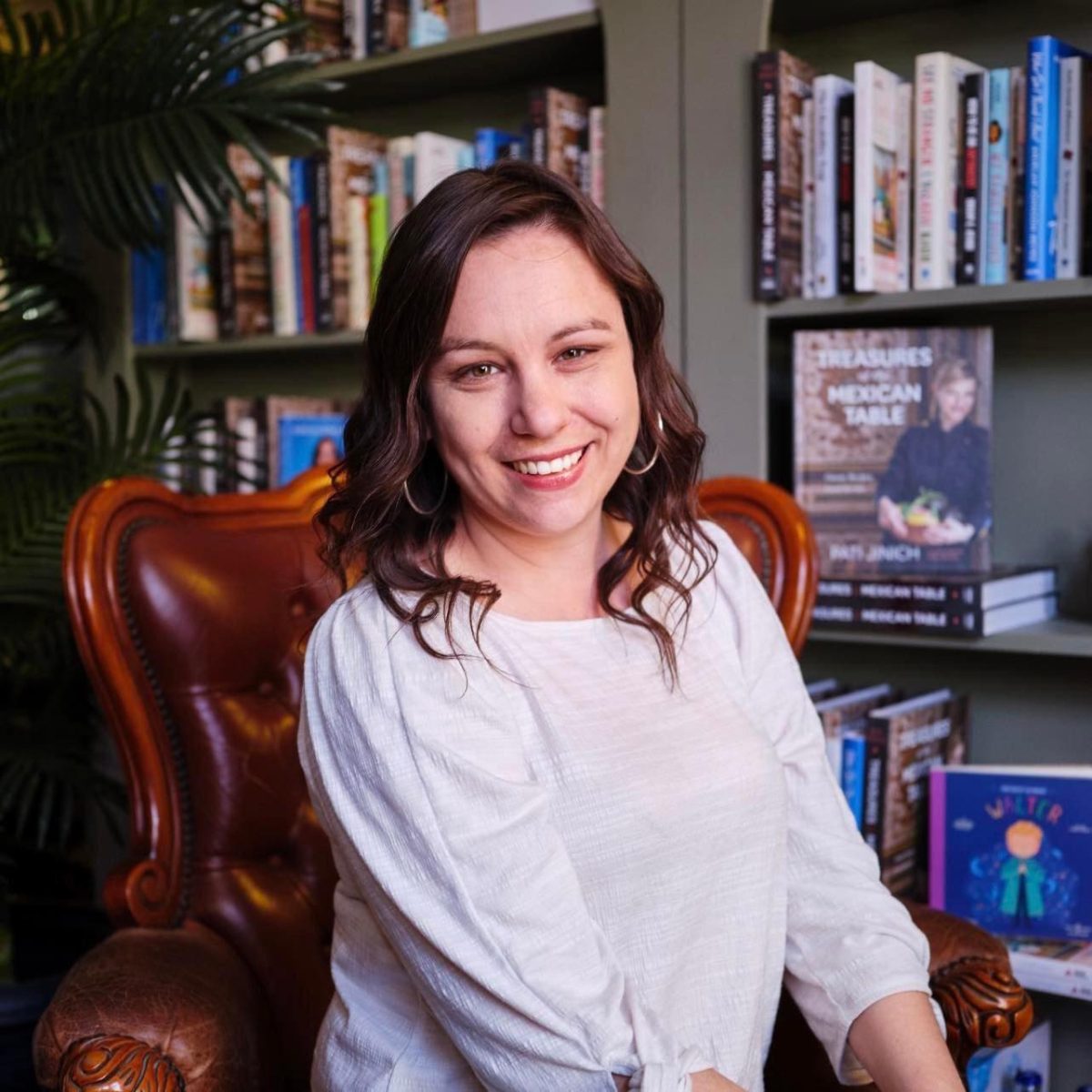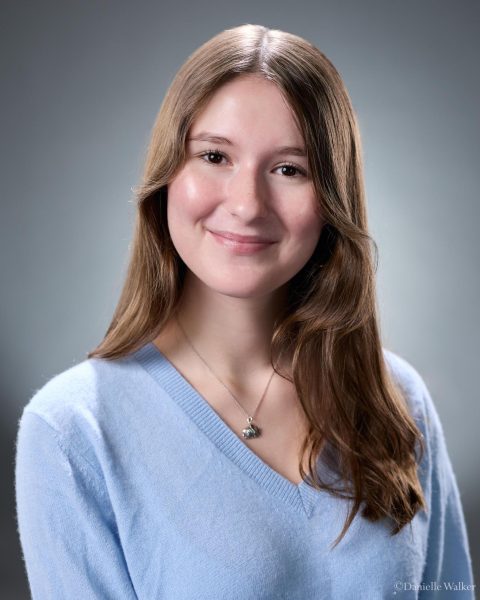Q: First question. Why are you running for school board?
A: Why am I ready for school board? It’s a great question. I honestly believe the power of public education, and I say that in regards to not only my experience as a student, but also my experience as a mom with four kids in the district. I grew up in poverty and didn’t have a lot of opportunities, grew up in a small town in South Texas. You name the barrier, I had it up against me and it was my high school guidance counselor who really showed me that when you remove the barriers, anything’s possible. So I was the first in my family to graduate high school, the first of my family to go to college. And that experience really guided me to where I’m at today. So I have four kids, three currently in the district, one at elementary, one at middle school, one in high school, one who graduated in the class of 2023. Go Lions. I know, I’m sorry. But those experience that I experience as a child really shaped me to be the advocate who I am today and why I’m running is to continue advocating for our teachers and students and educators in our community. I’ve seen the good and the bad of this district, and I think that that’s one of the positives in me is that I know what the district is capable of, and I want to continue fighting for it. And I have a saying that says advocate like a mother. And when I say that, I mean, I really do advocate like a mother. I’m running for reelection to continue doing the work that we’ve been doing for the last four years. I’m proud of this board. We pass on AEA local policy that addresses discrimination and really widens our lens in regards to diversity, equity and inclusion in this district. And because of that, we established the Office of Educational Access. I want to see those marginalized students be able to have the opportunities that I have and most importantly, the opportunities that my son had. And I’m not done advocating. We know public education is under attack in Texas right now. And I’m proud to say Leander ISD is holding the line right now when it comes to public education. But we need to ensure that we have individuals on this board who one know the value of public education, but also is going to do everything they can to advocate for this community, and that’s why I’m running again. I’m ready to fight that fight, and I want to continue fighting for our students, educators and community.
Q: And can you tell us a little bit more about what past experiences make you qualified to be a school board member?
A: So I like to tell people I’m just a mom trying to change the world, and I really am. My experience really started back in 2005. My oldest was born with multiple disabilities, and I had to learn firsthand that if I didn’t speak up, nobody was going to speak up for him. So what did I do? Like I said, I’m a mom trying to change the world. I joined our local PTAs. I was the president at all of my kids elementary, middle school and high school. I was also on the council PTA as the president, but also as the diversity and equity chair. We were the first district in the area to establish a diversity and equity committee for council PTA, and I was also the communication chair. Volunteering the experience of being a parent, having kids enrolled in the district, I feel like gives me an upper hand. However, we also have to remember what the Board of Trustees do. Our job is to govern this district. Our job is not to get into the weeds. And I think that is incredibly important. And I served six years on the Williamson County Advocacy Center board as their fundraising chair. And I’m going to be honest with you, that is probably the most insightful knowledge that I gained as far as what does it mean to be a true board member. And what that means as a board member is we don’t get into the weeds of things in the day to day operations, because we’re not all experts. That is why we hire a CFO. That’s why we hire chief of staff. My job is to sit up here on the balcony and to ensure that my superintendent is carrying the work of our strategic plan. My job is to ensure that this district stays in line and doing what’s best for each and every student. I can say my four years on the board, I’ve proven what I know what good governance is, and I know there may be some people who disagree, but this district has drastically changed the last four years for the better. And I really believe it comes down to good governance. And you see some of those opportunities in the boardroom where we have deliberated on certain items and individuals, well, I don’t understand why didn’t you do this and that. That’s not our job, our job is to stay up here on the lens and ensure that our superintendent is guiding our district to do what they need to do and most importantly, practicing good governance. I can’t stress that enough.
Q: Are you satisfied with Doctor Gearing’s job as a superintendent? Why or why not?
A: Yes, I believe so. And I say that with hesitation, only because there’s always room for improvement. Always. I got to know Doctor Gary before I got on the board, and I was that parent who went to board meetings every other Thursday to do citizens’ comments, because I wanted a change in the district. As a parent, I got to, you know, really have those conversations with them. But as a board member, I’ve got to see a different side of Doctor Gearing. And he’s passionate about what he does. And I think it’s unfortunate right now because you all know, in the state of Texas, public public education is under attack. There’s over 70 vacancies for superintendents right now because nobody wants to be a superintendent right now. Doctor Gearing, I feel like has really taken our district from here and has really made us go up here. I mean, look at our strategic plan. We won 2023 large AP district of the year. And the reason why we did that is because of the strategic plan that he envisioned and help the board create, and removing those barriers and providing access to our students. Can he improve? Absolutely. I know that for a fact, and that’s why I’m qualified and ready to continue doing that, because you can ask anyone else that I serve with on the board. I love this district, but I’m the first to call him out when I see something going wrong, because that’s my job, and he knows that I bring a different lens to it as a mom, but I also as a trustee, but as a public education advocate. So I want to continue holding his line, holding his feet to the fire. I mean, that in the nicest way. But it’s not easy being a superintendent in the state of Texas right now. You know, a good thing about him is that his thing is he feels for it and he’s always willing to learn. So if I could have a scale of 1 to 10, and he’s going to hate me saying this, I’ll give him a seven. There’s always room for improvements.
Q: And you’ve spoken already a bit about your children in the district. Can you touch more on their experiences in the district?
A: Yes, I’ll start with the girls. And then I’ll start with the boys, because I get a little emotional with my boys. So my, two daughters, I have two daughters, a sophomore at Glen, she’s a flute section leader, and I have a seventh grader at Stiles who’s a dancer, which is a whole other world. Those two, my two girls. What I love about this district is they were introduced opportunities that they would have not normally had in other districts. And I see this my sixth, my seventh grader is a dancer. Never took dance lessons ever. And in sixth grade you’re able to, you know, we encourage our students to go and try different opportunities. She’s in choir, she’s in theater and she’s in dance, and she’s doing it all. And had she not had those opportunities and, elementary for her theater arts teacher, she would have never found that passion. But most importantly, if she didn’t have the counselors to be able to say, hey, this is the path you want to go forth, this is what we do. I didn’t experience that as a child. My daughter in high school, started middle school when COVID started. And it was not an easy journey to get where we’re at. we had to move schools. And that’s what I love about this district, and everyone will know is I will do everything I can for my kids, and so we transferred out of our feeder school so she could, you know, different environment, just try to see, because at that point, we just wanted to do what was best for her. And I’m happy to say she found a band and she came out of her shell. And like most students who were feeling hopeless and just scared, what’s going on in the world? She found her group of individuals who really helped her come out of her shell, see, I told you I was going to cry. And I think about this district and I think how we have different environments for different kids. I feel lucky that I’m able to utilize what I can for my kids and what they need. My youngest, Jack, is at Tarvin. My baby, Jack, was nonverbal for the first four years of his life, and he has autism and he was intellectually delayed. And it’s interesting I say this because when we started reaching out for services, just so you know, at the age of three, you can utilize our service called Child Fine. And Child Fine is in the community to help identify students that are not in public school, to be able to get the resources they need for early intervention and special education, but also connect parents to the resources they need. My baby Jack, went into our district’s early program at Winkley Elementary, and I’ll be honest, I was very skeptical because of my experience I had with my oldest. Like, alright, I have to fight again. He’s not going to get what he needs. I was ready to go to battle. At four and a half, he finally said I love you and I got to see really what that power public education looks like in a different lens, because I was on the other end fighting for my son on this end. And I’ll be honest, it was that moment, I told y’all I get emotional, it was that moment when I realized that I can do this, and I want this opportunity for every other kid. And I’m proud to say, Jack Jack, he’s reading now. He participated in the Blue Bonnet Competition, and none of that would have happened had he had not got that early intervention at Winkley, but the support he got from our special education department. He still receives some consult services, but those first three years, that foundation, he was able to graduate from special education and now he is killing it guys. He’s got the resources he needs and the skills most importantly to be able to cope and that. So this leads me to my journey. Like I said, I’ve seen the good in the bad of this district. My oldest, just so I don’t know, there was a huge Houston Chronicle series. It’s called Denied. Brian Rosenthal kick the story off. And it was in regards to students who had been denied special education services in the state of Texas. We moved to Leander in 2015, after moving all over the country to find the best environment for my oldest. He has autism, but he was also born with multiple disabilities and as a mom, I just wanted to do what was best for him, so we moved to Leander. And it was not rosy. I’m going to be honest with you guys. I hit roadblock after roadblock to get services he needed, but I didn’t give up. And it was when that story came out, I got a hold with the Houston Chronicle and we told our story. We were story two. And honestly, that’s when I felt validated. I didn’t feel like my concerns as a parent were just going off into the wind. But I also realized that I’m one of a thousand parents going through this. So I got loud and I talked to anybody I could. The Department of Education came and investigated Leander ISD, and it’s because of me, and I mean that in the nicest way because we needed to do better for our kids. And so I knew that yelling and screaming at my kids administrators were only going to get so long because I knew that I can make the right road for my child, but thousands of other students didn’t have that opportunity or access. So I helped pass Senate Bill 160, which removed the special education cap for TDA. And I didn’t stop there. I continued advocating for more bills for special education, because I knew that my son was one of a thousand kids, but I knew that he had me in his corner. And so it was that moment. It was a 2019 legislative hearing. It was for a behavior intervention plan. And one of the representatives said, if you want to make some change, run for school board. And that’s exactly what I did. I wanted to be that parent on the board who knows what it’s like to fight and to feel frustrated and to be able to have those frustrations, but not just to be angry, but to turn them into action. And so people try to, you know, when I first ran for my son, you’re just running for special education. What people don’t understand is this district has over 29% of students who identify as special education, a 504. It’s a lot of parents who don’t have a seat at the table. And so honestly, I give a lot of my credit to my son, he’s the strongest guy I know. But he also made me strong as an advocate. And that’s why I’m here today. And I’m not going to stop. Sorry, I get a little emotional.
Q: We understand that you were involved in volunteer work in the community. Can you talk about what that entails and what you’re striving to achieve?
A: Oh, yeah. So I call myself a professional volunteer. Community, I believe, it’s the heart of what we do. I don’t stop, though, that’s the thing. If I’m not volunteering somewhere, I’m doing something. So, for instance, we’ll take PTA. PTA, I feel like, is a great avenue for parents to really get involved. National PTA really encourages our parents to advocate, but most importantly, to get out and get to learn our community. And when you have a strong community, you have strong public schools. And so for me, it’s really engaging parents who don’t feel like they have a seat at the table. And these are the like through PTA or through Girl Scouts. I’m also a Girl Scout. You know, it’s for me, it’s giving those little opportunities so parents can feel involved. So what it means to me, it means building a strong community. So parents feel like they have a seat at the table, but most importantly, this is why we have public schools y’all, this is the heart of our community. And I do feel like there are some barriers. You know, we have a lot of parents who, you know, work 1 or 2 jobs. That’s why I like to come into the play. I like to try to find little opportunities for parents to feel like they have a seat at the table, because not everyone can devote 30 to 40 hours of volunteer. And I think it’s important for us to realize that a simple hour, not even an hour, doing the email for me or doing something for an organization, that’s volunteering, that’s helping your community.
Q: In the last two years, election integrity has become a hot topic in politics. Do you believe there are problems with our election system locally or nationally?
A: No, I don’t. I think you have outside influencers who are trying to create chaos, to create distrust in the system. And you’re seeing that not only election integrity, you’re seeing it in public education. I think it’s unfortunate because I think there’s, you know, there’s something to be said about everyone when they turn 18 gets to have a vote. That’s your power. That’s your power, your voice right there. And I think the more we educate individuals on the power of their voice at the ballot box, the more you’re going to see this negative rhetoric happen. And I think it’s on us. It’s on people like me, it’s on our education system to really educate. And I love that we do this. You know, what’s fake news and what’s not? And we see that already happening in some of our schools, I know my daughter did it for one of her projects. So no, I don’t think so. I think if anything, we’ve got to continue advocating against that noise and really showing that the systems and processes we do have in place, locally and nationally do work, and we got to continue holding the line on that.
Q: All right. And would you accept the outcome of the election if you lost?
A: You know, I won’t stop advocating. This is what I do. I have moved mountains before. And if I don’t move this mountain, then you know what? I always joke with Doctor Gearing, I would probably be the district’s worst and best enemy. I mean that in the best way, because now I’ve been in a position where I understand how the district functions. And I also understand that before you get in this role, you have all these ideas and whatnot, but after being in this role, I know what it takes to function in this district. It’ll be hard, I’ll be honest, but I’m not going to stop because I have three kids in this district and there’s a lot of work that needs to be done. So if you don’t find me on the board, I’ll be doing something else, getting even louder to ensure this district gets what they need. I’ll cry though, I’m going to be honest. You know, eat a lot of tacos.
Q: What’s been your biggest accomplishment as a school board member?
A: Okay, I have a couple and I’m proud of them. So when we were putting together the strategic plan, as I said earlier, having access and removing barriers has been just kind of who I am and drives me to what I do. And I’m sure you all know, our district loves to do hot dots, hot dots for days. And they gave us hot dots to decide what were going to be our five strategic pillars, right, for our plan, I put all my hot dogs on access, because when you create access to students and you remove those barriers, everything else falls in place. But for our educators, too, when you remove barriers for them and able, they’re able to do what they know how to do, educate our students, anything is possible. I look back on that moment because I remember our board members are like, Anna, are you ridiculous? I was just putting all my 12 hot dots, that made it to our strategic plan. And I think about this moment because in December of 2020, we had our first big board meeting in regards to equity and data. And I remember looking at the special education percentage for our district for advanced IB and AP courses, 1% of our students are identified as special education qualify for that 1%, and now we’re at 10%. And that would have not happened had we not had access and our strategic plan, but most importantly, trickle down to help our administrators at our central level, but most importantly, our principals hit that data head on and understand what does that mean and not be afraid of it. The other thing I am incredibly proud of is I remember going on a visit to, 18 plus, which is back here. They hold a special place in my heart, I’m sure y’all know why. And I asked, I said is this as part of the Safe Act Plan, because we were getting ready to go to bond. No, it’s not, and I might have overstepped as a board member, but I said, okay, we need to figure out a way to ensure that this is part of the Safe Act discussions. Our special education rates are rising and we are not giving enough of our students our young adults and 18 plus the opportunities they need because the space and resources. That got on the bond and now we’re going to have a new building. And that to me just, going in regards to removing those barriers and creating access to those students. I think also, I know I keep going, but I think also, it’s just, being a loud advocate for our district. I think that’s one great thing. I feel like I’ve been able to do, people know Leander ISD, we have special we have advocates on this board. And I got asked to speak at the Boots for Voucher rally and to be able to sit up there with Dr. Gearing and talk about, no, we don’t want vouchers. And this is the amazing things we’re doing in Leander ISD. That was really my a-ha moment and why I wanted to run again. So I could go here all day, but then I can also tell you all the negative things too. But I think those three things are my, if I had to take away, those access strategic plan because it’s opened up so many doors.
Q: So, the district rezoning caused a lot of local controversy. Do you stand by the decisions you made about the rezoning, and what have you learned from the experience?
A: So, not to throw my other board members under the bus, but I was the only one to vote against the rezone. I called it. I was not happy that three of our high schools were going to go under modernization, Cedar Park, Vista Ridge, and LHS going through the master plan. I brought up numerous times, that we’re rezoning extra kids into an environment where there’s going to be chaos and construction. I’m against it. So I stand on that. I know I’m one of seven voices. I know it’s also a touchy subject. My child was part of that rezone. I was not happy about it, but what I was not happy about it, is that we were using systems and processes in place that needed to be updated, and I will continue to fight for that. That is one thing. I’ve been on the long range planning committee since the very beginning. And I’m frustrated as a parent, but also as a trustee because it is taking a lot of effort to get those systems and process updated. And because of that, like the secondary rezone and what we’re seeing, students, you know, I have a student at Glenn, you know, I have a student at LHS, we’re seeing the rise in our student populations. What I plan to do and what I keep planning to do is continue to advocate and continue to push on those systems. I imagine we’ll go back to another secondary zone. I do. Again, I’m one of seven voices, I think we’ve got to do better. I’m trying to be very PC about this because I was against it. Itt was not, we should have waited. We should have waited. And I know we needed space, like I said, I live in the far northwest of the district. We’re seeing the growth, but we could have waited. We could have waited. We could have waited.
Q: But what more are you hoping to accomplish if you get reelected?
A: I think the big thing right now, and we’re seeing it, is holding the line for public education, right? Making sure that our staff, our educators and students and parents know they have individuals on the board that are going to support them. But I also think we’re in a really weird time right now. We know our teacher retention rate is incredibly important, and it’s what can I do to help ensure our educators that we’re giving them what they need? And so then again, me being the loud voice, advocating for we need a better stipend system. And we’ve been saying that from the beginning. We’ve got to be more competitive, not only for our educators, but let’s be real, we know, charter schools are coming in. We know vouchers are on the rise. Public schools are finding themselves in a situation where we’ve never had to be competitive before. And guess what? We’ve got to. And so we’ve really got to be reimagine what education looks like. And when I mean that, I mean, yes, our K through five, our comprehensive high schools are doing great things, but we also know that we have an influx of individuals coming from out of state, who are used to innovative academies who are used to K through eight model. And that’s where we really have got to kind of shift, in our way of thinking is, for instance, my child was an IB student. He thrived in that environment, and I wish we could have had an IB school be able to see the full backs of it. However, my other kids love the comprehensive high school, but that’s what’s great about public education. We have choice, and so I want to continue being that voice. I want our community to understand that choice exists in Leander, but I also want to hold our district, their feet to the fire. We’re not done yet. We are far from perfect. And so, I want to continue the work that I’ve been doing. I wanted to see this district be the best that they can be.
Q: So LISD has a long range planning committee tasked with making recommendations regarding the changing size of the district, facilities and innovation academies. What do you think are the biggest priorities LISD you should be considering in terms of long range planning?
A: A lot. Priorities, I think making sure that one, we recognize that each community is different. That’s probably the biggest thing. What happens in my community is not necessarily what’s happening here. And I think it’s important that we go back to those individual communities and get that feedback. Again, long range plan is a touchy subject for me because it’s been a lot. I’ll be honest, when I first got on the board, we didn’t have a long range facility plan. We just built schools wherever they needed to go. So this is a much needed plan that we should have had ten years ago, but you know what, neither here nor there. We’re in the here now. What I’ve learned in this process is that emotions do get involved in this. And I mean, like I said, I was part of the reason I got emotional, but I also have to understand the I represent 43,000 students here, and I have to keep that in the forefront, that I might be upset that my kid’s getting rezoned three schools away, I also have to remember that I’m one of 43,000. I think my big thing in all of this is making sure, and I talked about this in the board meeting, is when we start having these discussions as far as repurposing or addressing the decrease in enrollment or even an increase in enrollment or even to those communities that are looking at those k-8 communities, we’ve got to go to those communities. We’ve got to utilize our site based committees we have now. So parents and students and staff have a seat at the table, because what might work, I’m just going to use my kids school, there are like 900 kids, right? I think we’re in the right direction. I think, as I was saying, I think it’s really going to depend on what each and every community wants, but at the end of the day the board’s going to have to make some hard decisions. We’re seeing the same conversation happen all over Texas. The difference is that I feel like it’s more community led here and more neighborhood school led. If you look up in Plano ISD, they’ve already closed two schools. They didn’t go to the community. The board made the decision, and that’s not what we’re going to do because we value our local community schools. So, I think we’ve got the next two years it’s going to be hard. I’m going to be honest with you, because our district is 200 square miles and each community is experiencing their own problems, and also their own unique ways and how they’re either growing or also decreasing in enrollment. And I think that’s where we’re really going to have to lean in and try to remember that we’re one of 43,000 students. We’ve got to do what’s best for our students. So I think with Jeremy Trimble being hired on, I’m excited for him because he was in Eanes ISD and he’s had experience with their long range planning facility. And I don’t know if y’all know, but we also hired a third party consultant. And that’s what we’ve been in this entire time. It takes the emotions out of the process, and we’re able to get that done third, that, you know, kind of overhead view. Okay, this is where we need to be. This is where we need to go and then bring it back to the community. And that’s where we parents to speak up. So it’s a sticky, messy process, but I feel like we’re finally on the right direction. That’s why I want to continue running because I want to see it through. I want to see it through.
Q: And how do you believe Leader ISD should go about facility optimization regarding schools with low enrollment?
A: I think it goes back to the community. It does. I know our long range planning subcommittee put together a matrix on what that looks like. Some of those options I’ve heard is, you know, half the school. For instance, Steiner Ranch doesn’t have a public library. One of the options was that half the school be an elementary and half be a public library. Students are having to go to Starbucks and Summer Moon to study. And so to be able to have that space there that the community can utilize it, again and this is just a recommendation, I’m not suggesting this I just want to say, but it’s really not so much about repurposing as how do we build those community schools to really impact the community. And that, I feel is the most important piece of that, but also, it’s going to be what the community wants. At the end of the day, if I was in an area where I was facing that, you bet I’d be advocating for my public schools. But I also have to remember, again, we are a big district and we’ve got to do what’s best for the entire district. So I think those conversations are going to get a little interesting, but I also think that if we keep our vision and mission at the forefront of these decisions, but also take in mind that that community school is someone’s community, that’s their heart. That’s what they see every day. I think we’re going to be okay. It’s going to be a little bit weird, but I have I have faith in what the process we have set up now it’s going to be okay. The matrix the subcommittee put together is pretty solid, if y’all haven’t seen it, it is solid. Like, if this happens and this happens and this happens and you know, you will have parents who are upset, but it’s all in how you communicate it, but most importantly, you know, they just want to make sure the kids aren’t missing out and their kids are getting the same experience as each and every kid in the district. So that was a lot.
Q: Texas hasn’t increased student allotment since 2019, and many districts say the state is not fully funding public education. What is your view on it and should anything be done to increase public school funding?
A: Oh my gosh, this is my jam. So I know, I always get trouble with Doctor Gearing and Trish, our other board member, because although House Bill three did help us, it didn’t do much for us. The money we did get from House Bill three, we were told were to allocate those funds, and with inflation, we would have to raise the basic allotment up to $1,000 just to compete. That’s just one piece of the puzzle here. So back to special education. So as I mentioned, the special education cap, right, was exposed and removed. Leander ISD in 2015, special education rate for the district was 6.5%. We are now at over 18%. So we had an increase of students, but in addition to that, the way we get funding for those students is through special education allotment. That allotment has not been updated since 1991. And because of that allotment, our district spent $36 million extra in special education services because we’re going to do what’s best for each and every student, because we also have a legal obligation to do that. Had we not spent 36 million more dollars, had we had an updated special education allotment, had we had an updated basic allotment? This district would have passed a surplus budget and we would have had extra funding. But because of outdated special education allotment and because of the state’s refusal to fund public education, we passed a deficit budget. So I’m frustrated because I feel like districts are being put in a hard space right now because in reality, we’re waiting for our lawmakers to step up and fund education. In addition to that, not just the allotments, but we had our SHARS funding, which is our, students health, SHARS is what we use for students with disabilities for extra services like occupational therapy, speech therapy. That’s a federal program that we get funds from. This year, it was slashed by $7 million and we had $180 fine. So it just continues adding on to our budget constraints. And so what am I going to do? Keep doing what I’m doing. I actually got to confront the TEA commissioner this weekend on what is he going to do to help provide for special education. Because we’re not the only district seeing this right now. It is across the state. Our numbers are rising because of that cap being removed. Not only is it putting the pressure on me as a board member, but our teachers are feeling that right now. Resources are limited and stretched thin. And so I’m actually working with two of our local lawmakers right now for new special education reimbursement model. And I’m working with Round Rock ISD and Pflugerville ISD to make this happen. And it’s got bipartisan support. So regardless whether I’m in this position or not, that’s what I’m coming for next. Will it fix the problem? Probably not, but you know what? Every bit counts.
Q: During the summer, it was announced that Leander was facing a roughly $13 million deficit. What do you attribute to that deficit, and how do you believe that to be addressed?
A: Outdated funding formulas, like I said. We spent 36 million more dollars in special education last year because we’re doing what’s best for each and every student. Had the allotments been updated and not in a placement setting like we are, because 80% of our students who qualify for special education are your general Ed students. We get the very bare minimum when it comes to that from the state. So the state actually supports a segregated model where they want your students to be segregated. That’s not the case here. That’s not what we do in Leander. If we had an updated special education allotment, we wouldn’t be in this position. We would be able to give our staff the resources they need. We’d be able to give them stipends to be able to compete with other districts. But most importantly, our teachers would not be feeling the pressure that they’re feeling. If we raise the basic allotment by $1,000 to keep up with inflation, granted, it’ll help us probably for 2 to 4 years. But it’ll be, again, we’d be able to get the staff the raises they need. We’ll be able to retain the teachers that we need to do to be able to educate the students that we need and be able to do a lot more than what we’re trying to. I mean, we’re scraping by here. And so, I can’t imagine what we would be like in the conversations we would have if we were properly funded for special education in Texas. We’d be looking at a lot different picture here. And that’s why I’m not going to stop. Like I said, even if I’m not in this seat, I won’t stop fighting. I know the value of public education. This state deserves and we need to be funding our public schools. We have to.
Q: There has been growing polarization and tension among school boards across the country, and we even seen some tension in our own board. How do you see yourself working with board members you may disagree with?
A: You know, I think that’s the beauty of me, is that I can, sometimes it gets me in trouble though, because I know what it’s like to be angry and upset and not have your voice heard. I’ve been that parent. I’ve been that parent. And it’s hard sometimes when you work with individuals who don’t share the same love for public education. But I’m going to be honest with you guys, there’s always common ground, there’s always common ground. And usually for me, that common ground is through special education. But I mean, at the end of the day, as parents, we want to do what’s best for each and every student. But I’ll be honest, I have to draw the line. We see what’s happening north of our state. I don’t want that here for Leander. I don’t want chaos on our board. And so I think it’s, board members have really got to remember that we’re there for the students and for the educators, we’re not there to cause chaos. And if the chaos is coming, you need to look the other way and you’ve got to remember your why. Put your head down and focus on your students and educators. And so, my other board members always laugh because I will meet with anybody. They say I go into the lion’s den and that’s what I do. Because again, I think as parents we want to do what’s best for our kids, but there’s always common ground. There is always common ground and I will find it, and it might bite me later, but you know what? For that moment, right, we found common ground and we’re going to do what’s best. So it’s hard. I’m not going to lie, it’s been a hard four years. But I’m not done. I love this district too much and I don’t want to see us crumble. I really don’t.
Q: Is there anything you’d like to add before we go?
A: I think, to add is just, I’m not done fighting. I’ve said that a lot. I’m not done advocating. I love this district. Even if I don’t win, I’m still going to continue fighting, because that’s what I do. I’m invested in this district, and I always laugh, I’m like y’all have ten more years left with me, ten more years. I’m not going anywhere. And I think the big thing for me is making sure people get out and vote. And it’s not just for school board, it’s up and down the ballot. Public education is on the ballot and it’s always going to be on the ballot. But more than ever, in Texas, we’ve got to hold the line. We’ve got too. Just get out and vote. Use your right. Oh and, go T-Wolves.
Q: What’s your favorite high school memory?
A: Oh gosh. Okay. I mean, I had a lot of fun memories. Y’all are going to make me cry. So I did not have a really good home life growing up and I lived with my high school counselor in high school. And I didn’t think I was going to, sorry. I didn’t think I was going to graduate because I was going to repeat the cycle in my family. I’m the oldest of nine, and I’ll never forget this moment in my life. I was in her office trying to figure out where am I going to go next in my life. I was 16, I had a new car, you know, that’s all I worried about. And I remember her sitting me down and giving me that tough love I needed in my life. And I’ll never forget because I was looking at her college certificates on the wall, and she was like, that can be you. And she goes, let me tell you about a program we have in our district, and you can still go to high school. You can still play softball, you can learn at your own pace. It was like New Hope and I was like, I’m not a troubled kid, I don’t want to go to that. I want to, you know, still do all this stuff, and she was like, no, I need you to listen. This is your opportunity to break that cycle. This is your opportunity to get out of here. At 16 I made the biggest decision of my life and I don’t regret it. I enrolled right away and I finally had hope. And it took that educator to give me that hope. I know it’s not a happy memory, but I graduated a year early y’all. I got out of that cycle. And that’s why I’m here today, because at that moment, I remember it was October, it’s been almost 21 years. It was October 12th and that was the moment my life changed. That was my favorite high school memory. I finally had purpose in my life and that’s why I am where I’m at. That is my drive, is that moment right there. Because had I not made that decision, had I not made that choice, I don’t think I would be here. I don’t think I’d have the drive that I have. I definitely would probably still be where I am in my hometown, continuing the cycle. So that’s probably my favorite. It’s a sad memory, but it’s a joyful memory for me. Oh, sorry, I cry a lot.

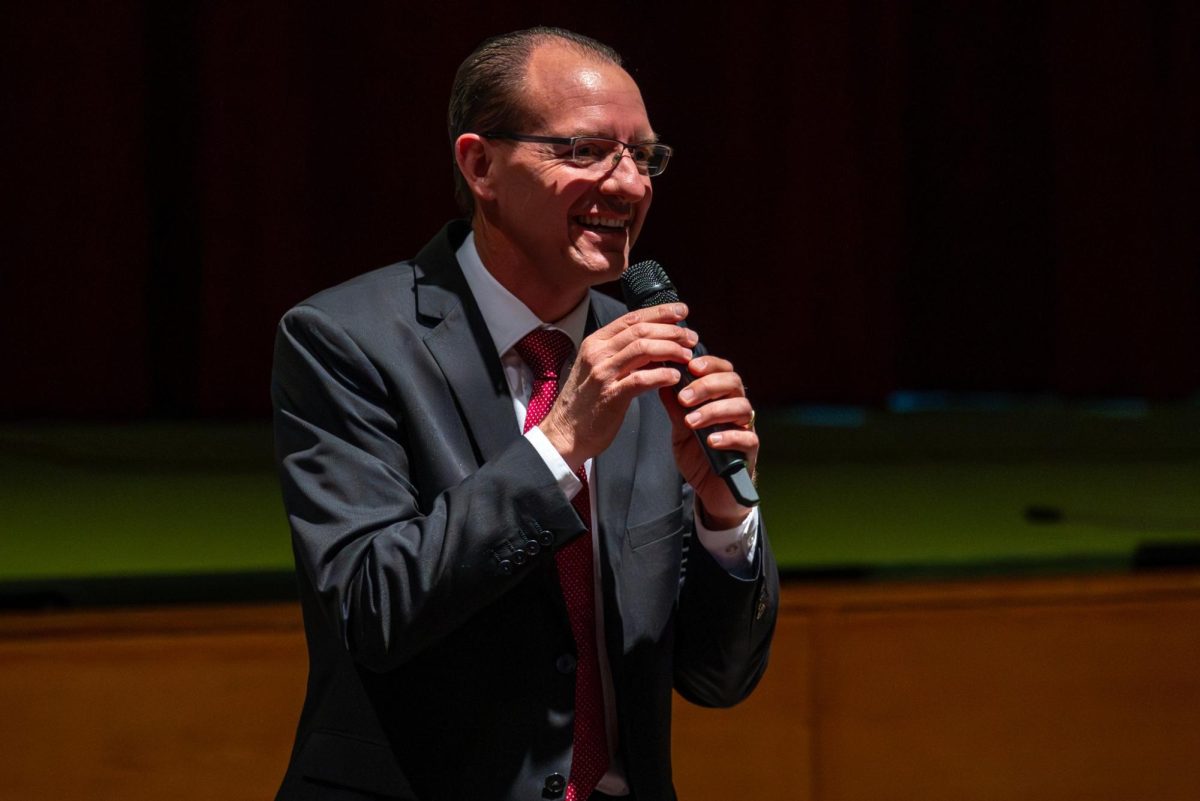
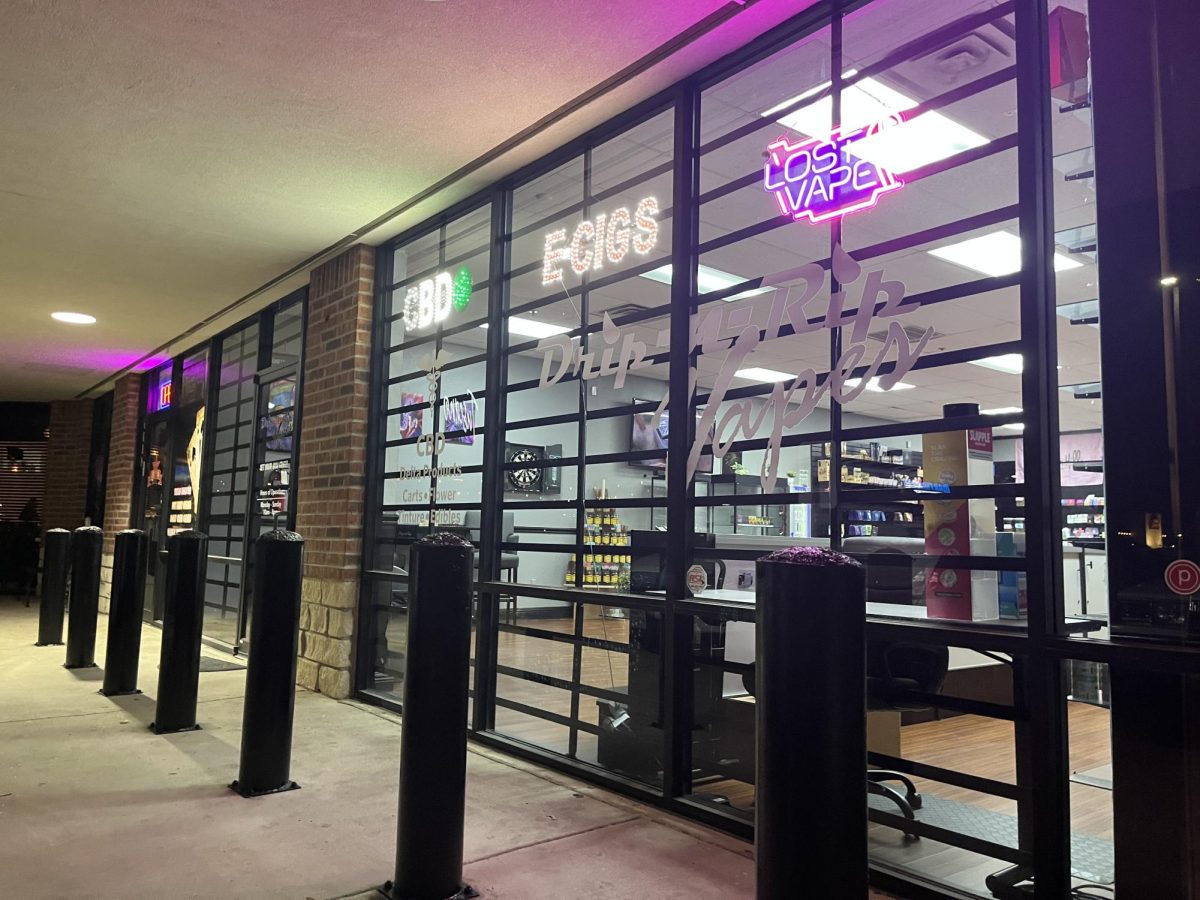
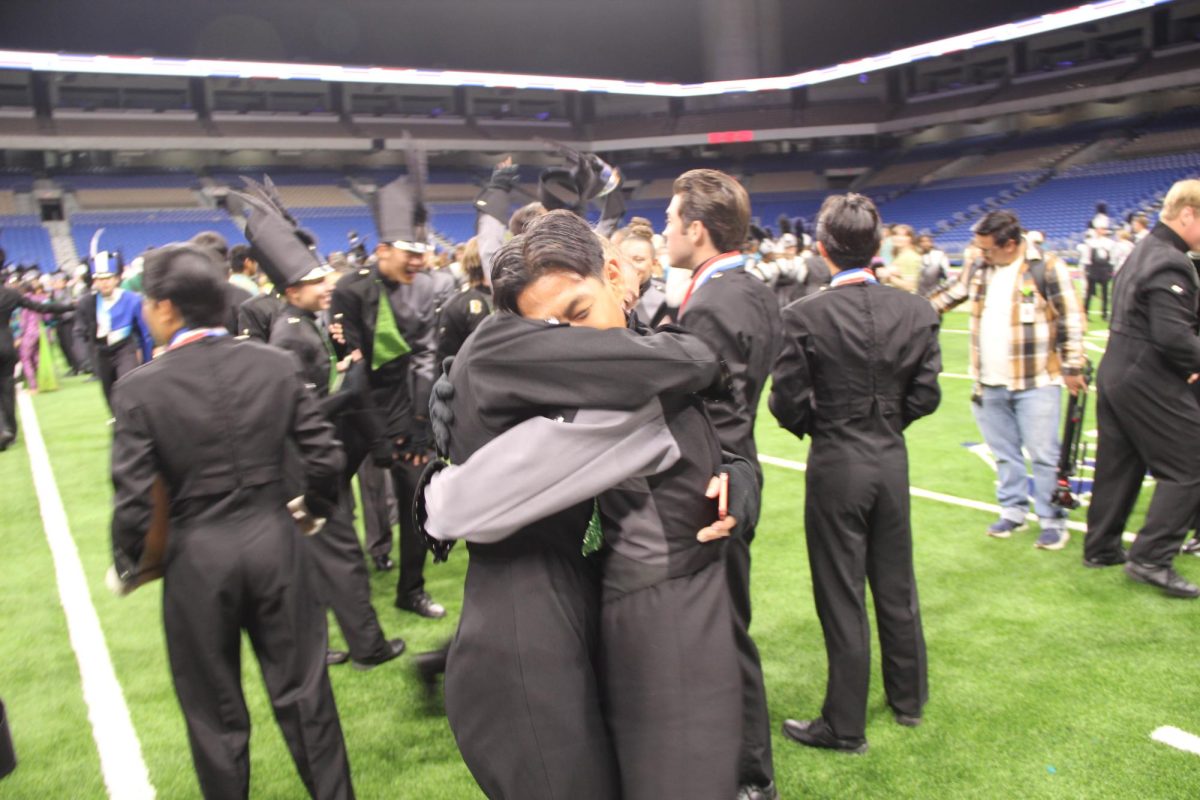
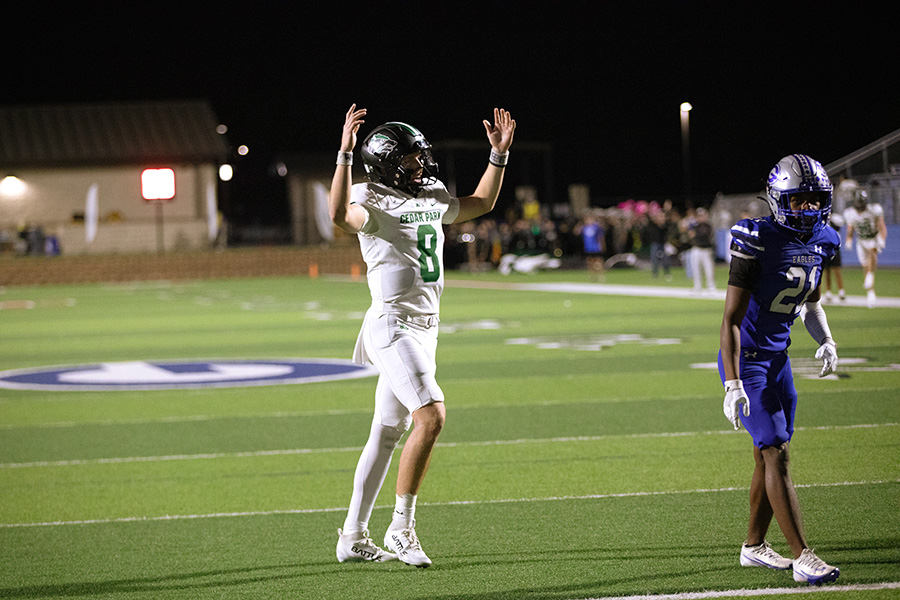
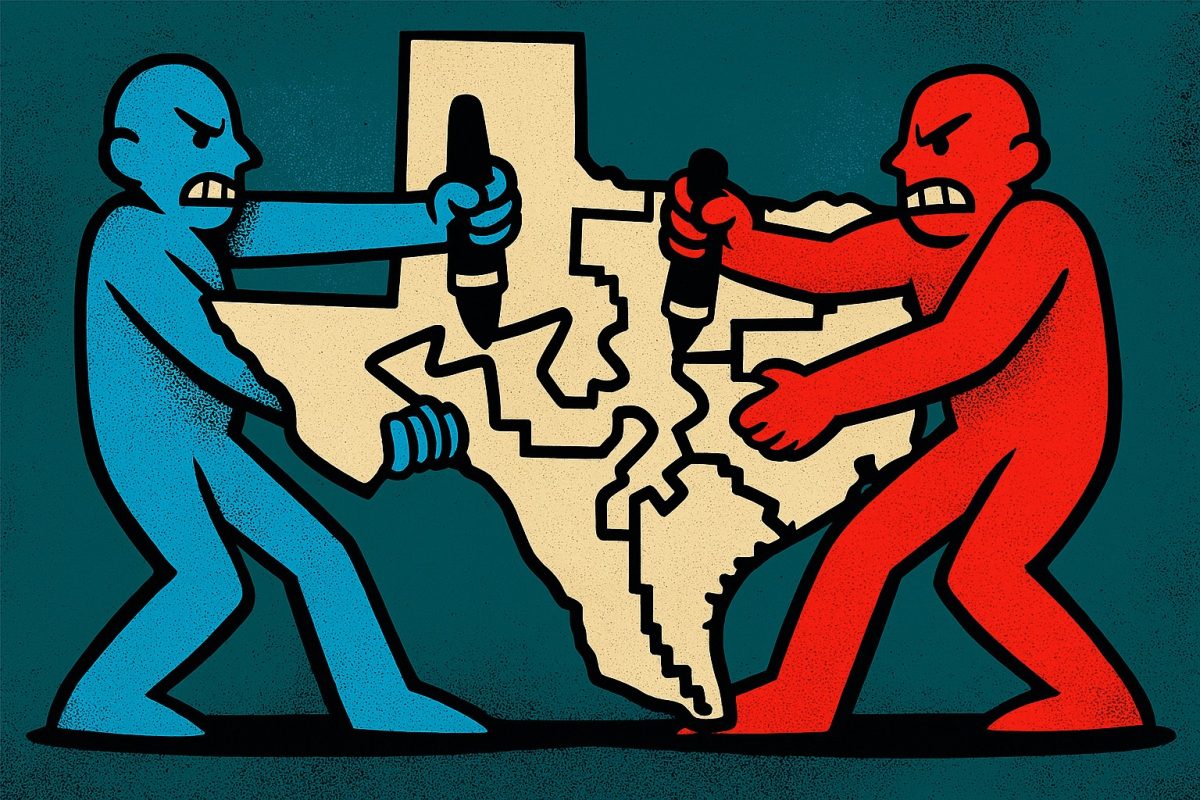
![Senior Jett Mckinney stores all the clothes in his own room, with half of it stored in his closet along with his personal clothes, and the rest taking up space in his room.
“There’s been times [when] there’s so much clothing stored here and it gets overwhelming, so I end up having to sleep somewhere else in the house,” Mckinney said.](https://cphswolfpack.com/wp-content/uploads/2025/11/DSC_0951-1200x800.jpg)
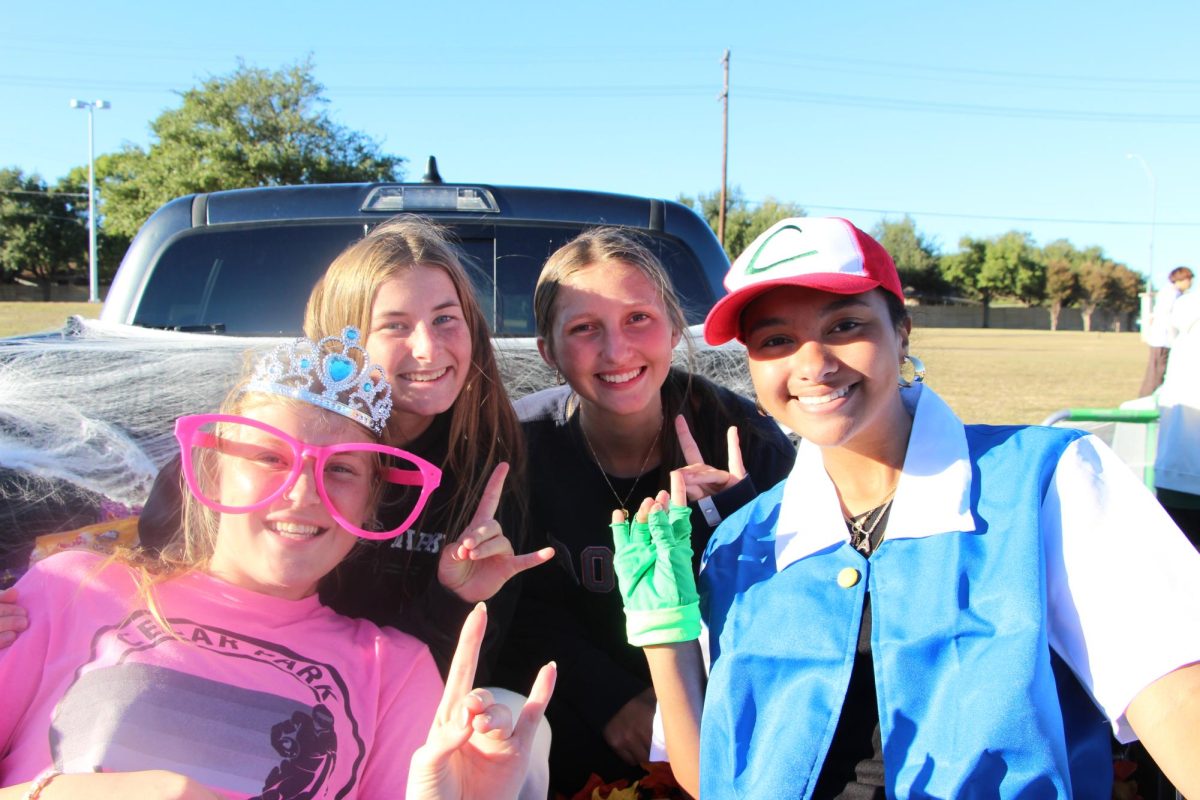
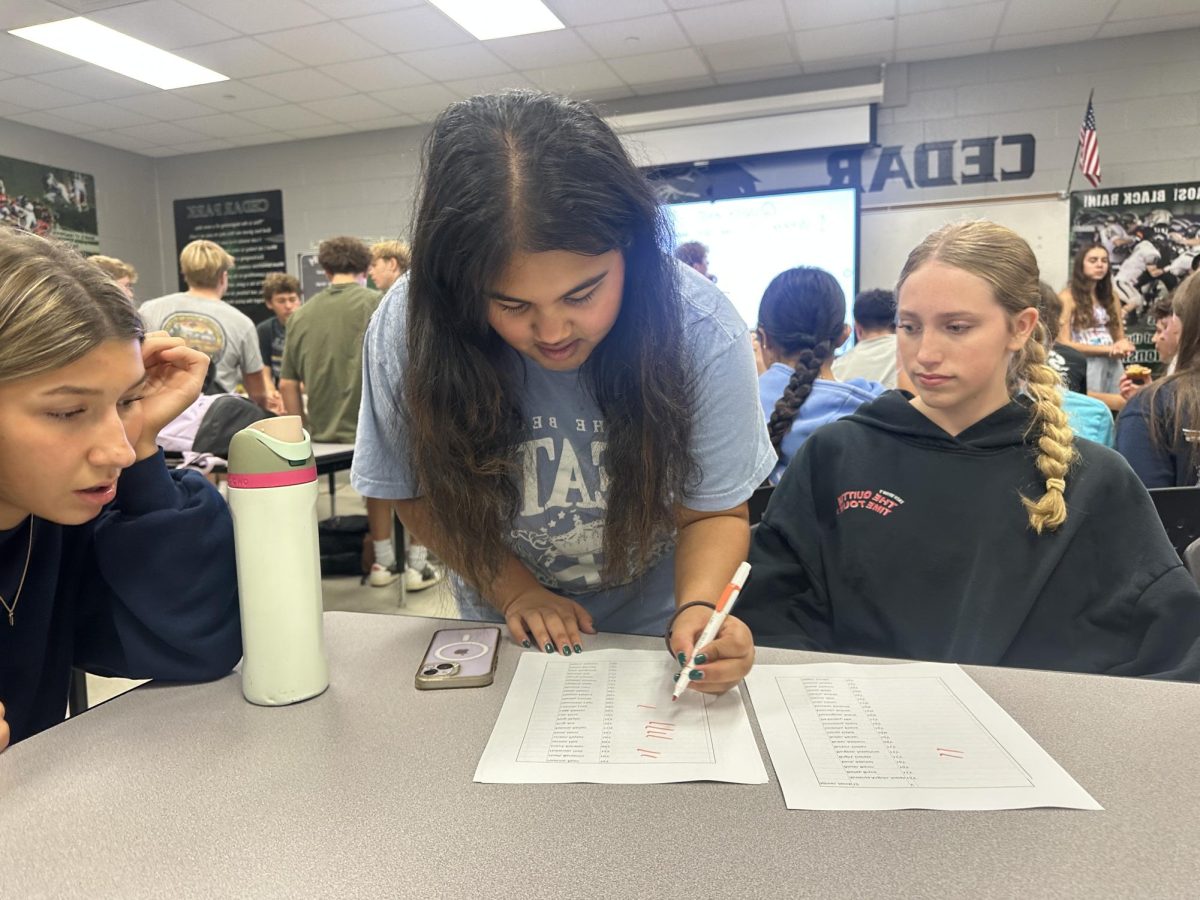

![Broadcast, yearbook and newspaper combined for 66 Interscholastic League Press Conference awards this year. Yearbook won 43, newspaper won 14 and broadcast took home nine. “I think [the ILPC awards] are a great way to give the kids some acknowledgement for all of their hard work,” newspaper and yearbook adviser Paige Hert said. “They typically spend the year covering everyone else’s big moments, so it’s really cool for them to be celebrated so many times and in so many different ways.”](https://cphswolfpack.com/wp-content/uploads/2025/05/edited-ILPC.jpg)




![Looking down at his racket, junior Hasun Nguyen hits the green tennis ball. Hasun has played tennis since he was 9 years old, and he is on the varsity team. "I feel like it’s not really appreciated in America as much, but [tennis] is a really competitive and mentally challenging sport,” Nguyen said. “I’m really level-headed and can keep my cool during a match, and that helps me play a bit better under pressure.” Photo by Kyra Cox](https://cphswolfpack.com/wp-content/uploads/2025/09/hasun.jpg)

![Bringing her arm over her head and taking a quick breath, junior Lauren Lucas swims the final laps of the 500 freestyle at the regionals swimming competition on date. Lucas broke the school’s 18-year-old record for the 500 freestyle at regionals and again at state with a time of 4:58.63. “I’d had my eye on that 500 record since my freshman year, so I was really excited to see if I could get it at regionals or districts,” Lucas said. “ State is always a really fun experience and medaling for the first time was really great. It was a very very tight race, [so] I was a bit surprised [that I medaled]. [There were] a lot of fast girls at the meet in general, [and] it was like a dogfight back and forth, back and forth.” Photo by Kaydence Wilkinson](https://cphswolfpack.com/wp-content/uploads/2025/03/Kaydence-2.7-23-edit-2.jpg)
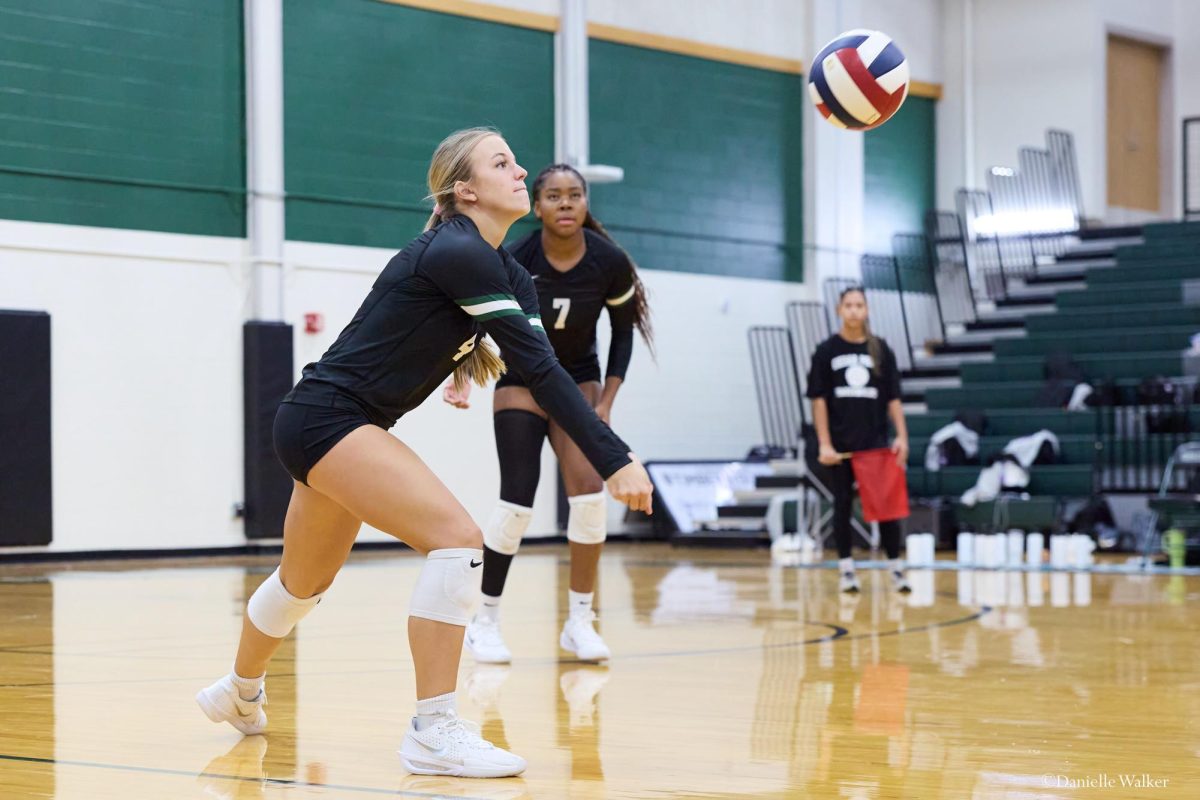
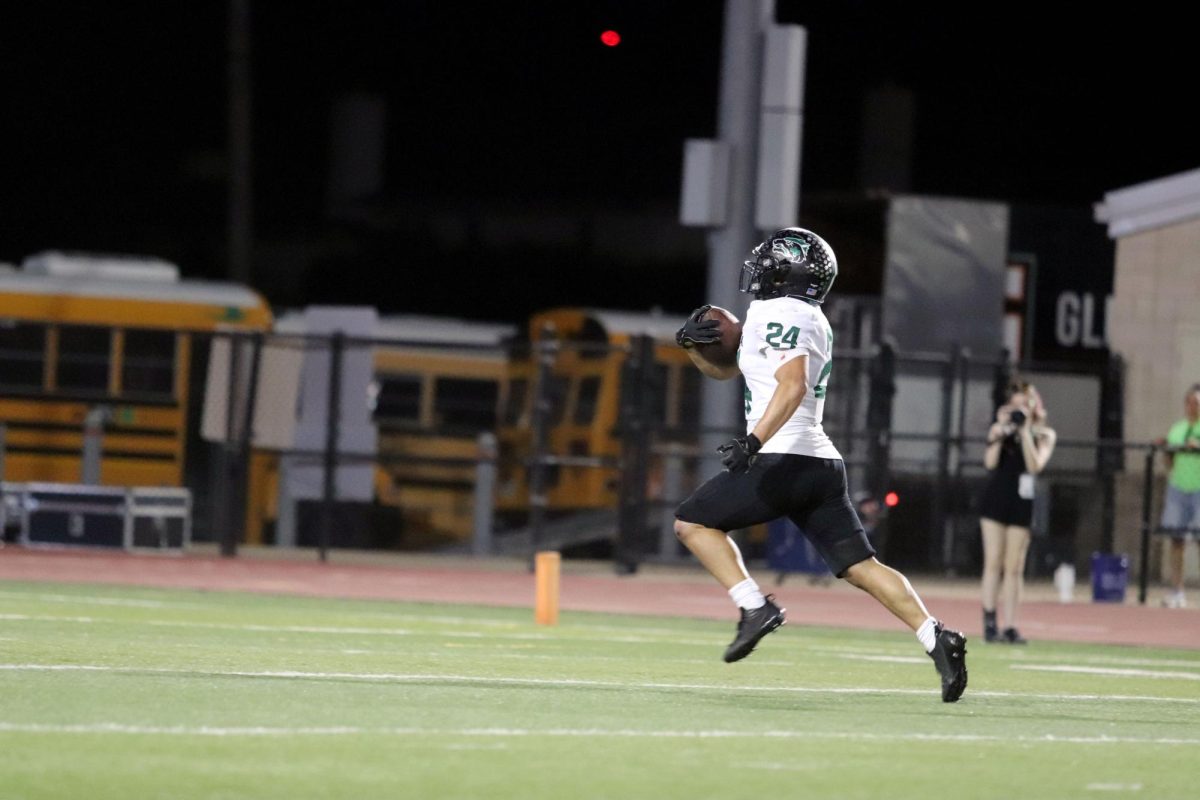
![As her hair blows in the wind, senior Brianna Grandow runs the varsity girls 5K at the cross country district meet last Thursday. Grandow finished fourth in the event and led the varsity girls to regionals with a third place placement as a team. “I’m very excited [to go to regionals],” Grandow said. “I’m excited to race in Corpus Christi, and we get to go to the beach, so that’s really awesome.” Photo by Addison Bruce](https://cphswolfpack.com/wp-content/uploads/2025/10/brianna.jpg)

